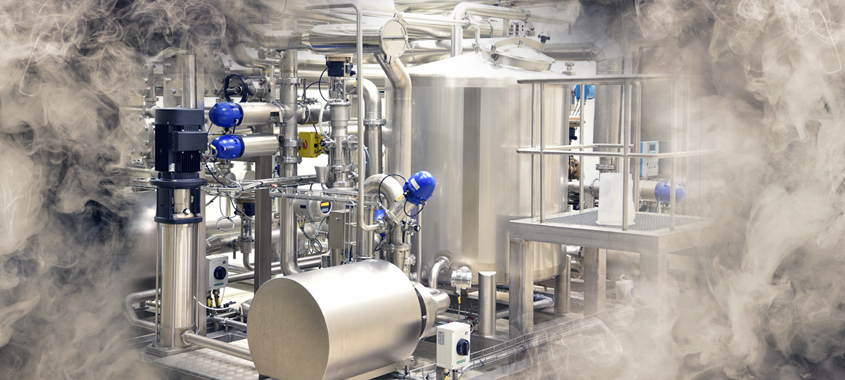CIP and SIP
The importance of elastomer o-rings in CIP and SIP processes.
The cleaning of industrial machinery is of particular importance in process plants that manufacture very different products and are therefore subject to much higher hygienic requirements. Today, the development and growth of CIP/SIP technology makes it possible to carry out the cleaning process without dismantling equipment, in an automated manner and in the shortest possible time.
To ensure that the manufactured product passes the quality controls implemented in the facility, cleaning must be understood as another phase of the total production process. In short, capital goods must be cleaned frequently and thoroughly. That is why we have considered it appropriate to dedicate this article to two industrial cleaning systems that have brought about a paradigm shift in this respect.
If you work in the industrial field, it is very likely that the acronyms CIP and SIP are already familiar to you. We invite you to stay with us to remember together what they are and how, from EPIDOR SRT, we can help you to choose the right O-rings to avoid compromising the tightness of your capital goods.
An approach to industrial CIP and SIP cleaning systems:
Almost an entire CIP/SIP process is automated and carried out in stages, which can combine different types of cleaning, flow rates, pressures and temperatures. All of this can be programmed in a SCADA environment to control the various operations of the process. Let’s take a rough look at what these two industrial cleaning systems consist of:
CIP or Cleaning in Place
This is a chemical cleaning process used in process industry facilities (food, beverage and pharmaceutical, among others) to prevent contamination of products from different manufacturing batches, or to prevent cross-contamination with other manufactured products.
A CIP process combines a minimum of 4 factors in the removal of microorganisms and other deposits. Time, temperature, choice of cleaning agents (depending on the substances to be removed) and turbulent flow (Re > 3,000) play a major role in the effectiveness of the sanitization process.
Sterilization in Place (SIP)
We could say that the SIP process is the final task of cleaning in place (CIP). It is a process based on applying steam at high temperature (between 120°C and 140°C) to sterilize the surfaces treated with chemical CIP.
A note: as an alternative to the application of steam, there is also chemical sterilization using reagents such as bleach, chlorine dioxide, hydrogen peroxide, ozone and peracetic acid (PAA), among other compounds. In both ways, the surviving microorganisms are eliminated, without the need to disassemble the equipment or sterilize it in an autoclave, if that were feasible.
To illustrate what has been said so far, here is a diagram of what a CIP/SIP process might look like. In this autoclave, the CIP process combines basic cleaning with acid cleaning and ends with SIP sterilization. The times and temperatures indicated in each stage are completely indicative.
How important is the quality of O-rings in CIP and SIP processes?
Implementing a CIP/SIP process in a plant necessarily entails a rigorous selection of elastomer O-rings. A good choice will increase the preventive maintenance interval of the facility while optimizing its production.
Let’s see how temperature, water and chemicals used in the cleaning and sterilization of your equipment could affect the seals.
- Water. The water consumed in pre-washing, rinsing and final washing must be treated. If we take the pharmaceutical sector as an illustrative example, this premise becomes even more relevant, if possible, with the use of WFI (water for injections) quality water.
- Chemical products. It should be kept in mind that the various chemical products used, as well as the successive temperature changes of each stage, can compromise the tightness of the equipment by damaging the elastomer O-rings (especially those O-rings that are under load).
- Temperature. We cannot forget that, in order to improve the performance of the CIP/SIP process, both chemical cleaning and sterilization are carried out at high temperatures. And this contributes to the deterioration of the O-ring if the right elastomer has not been chosen.
The importance of choosing CIP and SIP certified O-Rings
The following diagram shows the main characteristics of the most common elastomers:
1Detailed information on this water quality is available in European Pharmacopeia Monograph 0169 (Ph. Eur. 0169).
ELASTOMER CHARACTERISTICS
EPDM / -40 ºC up to +150 ºC and and peroxide cured
- Good resistance to aqueous media, acids and bases CIP, as well as hot water and steam.
- Very good resistance to aging and ozone.
- Not suitable for oils and fats of vegetable or animal origin
FPM / -20 ºC up to +200 ºC and and peroxide cured
- Good resistance to all types of hydrocarbons (oils, greases or organic solvents).
- Good resistance to steam (T < 150 ºC).
- Not suitable for CIP alkaline media.
FEPM / -10 ºC up to +230 ºC and and peroxide cured
- Resistance to CIP and SIP cleanings.
- Good resistance to oils and greases.
There are many EPDM, FPM and FEPM elastomer formulations on the market. However, those with CIP/SIP and, if necessary, WFI certifications should be chosen. This ensures that the material is compatible with a CIP and SIP process and does not degrade WFI quality water by migration of formulation components.
If you have any questions about which O-rings to install, our Epidor SRT Technical Department is at your disposal. We will help you choose the best sealing solutions for your process plants. You can also download our O-Ring Catalog.




Leave a Reply
Want to join the discussion?Feel free to contribute!